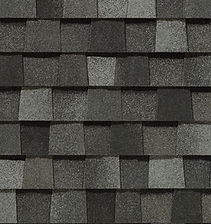4 Surprising Facts About Hail Storms You Probably Didn’t Know
- Staff
- May 20
- 2 min read
Updated: May 27
When most people think of hail storms, they picture sudden bursts of ice pelting cars and rooftops during a thunderstorm. But there’s more to hail than meets the eye. These frozen projectiles are not just weather nuisances — they’re fascinating, powerful, and sometimes even a little mysterious. Here are four surprising facts about hail storms that might just change the way you see them:

1. Hailstones Can Grow as Large as Softballs
While many hailstones are the size of peas or marbles, some can grow to the size of softballs — or even larger. The largest hailstone ever recorded in the U.S. fell in Vivian, South Dakota in 2010. It measured 8 inches in diameter and weighed nearly 2 pounds! That’s more than enough to shatter windows, dent vehicles, and even injure people caught outdoors.
2. Hail Doesn’t Just Happen in Cold Weather
It might seem logical that hail forms when it’s freezing outside, but that’s not necessarily true. Hail is actually most common during the warm months of spring and summer. It forms high in thunderstorm clouds where temperatures are below freezing, even if it’s hot and sunny on the ground. So yes — you can get pelted with ice while wearing shorts and a tank top. In fact, this is much more likely to be the case.
3. Planes Help Scientists Study Hail from the Inside
Meteorologists sometimes fly specially equipped aircraft into storm systems to study hail. These planes, often outfitted with radar, sensors, and cameras, fly through hail-producing clouds to gather data on how hailstones form and grow. It's risky work, but this research helps improve hail forecasts and early-warning systems for communities in harm’s way.
4. Hail Storms Cause Billions in Damage Every Year
Hail may be short-lived, but its financial impact is enormous. In the U.S. alone, hail causes an average of $8–14 billion in damage each year — mostly to roofs, cars, crops, and siding. That makes hail one of the costliest weather-related disasters, right up there with tornadoes and hurricanes. Insurance companies are constantly adjusting policies in hail-prone regions to account for the growing risk.

Final Thoughts
Hail storms may not be as dramatic as hurricanes or as headline-grabbing as earthquakes, but they pack a serious punch. From their surprising formation to their destructive power, hailstorms are yet another reminder of nature’s incredible — and sometimes unpredictable — forces. Next time you hear that telltale ping on your window, you’ll know there’s a lot more going on than just falling ice.
If your house was recently affected by a hail storm, you should get your home inspected by a trained professional. If you live within our service area, contact us today to schedule your free hail damage inspection, or schedule your free inspection online.






















